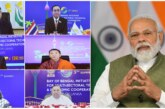Inclusive growth requires rapid and sustained poverty reduction programmes that allow people to contribute to and benefit from economic growth. Rapid pace of growth is undeniably essential for substantial poverty reduction, but for this growth to be sustainable in the long run, it should be broad-based across sectors, and inclusive of the large part of the country’s labor force. According to a World Bank publication, this definition of inclusive growth implies a direct link between the macro and micro determinants of growth. The micro dimension captures the importance of structural transformation for economic diversification and competition, including creative destruction of jobs and firms.
Inclusive growth refers both to the pace and pattern of growth, which are considered interlinked, and therefore in need to be addressed together. The idea that both the pace and pattern of growth are critical for achieving a high, sustainable growth record, as well as poverty reduction, is consistent with the findings in the Growth Report: Strategies for Sustained Growth and Inclusive Development (Commission on Growth and Development, 2008).
The commission notes that inclusiveness – a concept that encompasses equity, equality of opportunity, and protection in market and employment transitions – is an essential ingredient of any successful growth strategy. Here the emphasis is on the idea of equality of opportunity in terms of access to markets, resources, and unbiased regulatory environment for businesses and individuals.
According to World Bank, the inclusive growth approach takes a longer term perspective as the focus is on productive employment rather than on direct income redistribution, as a means of increasing incomes for excluded groups. In the short run, governments could use income distribution schemes to attenuate negative impacts on the poor of policies intended to jump start growth, but transfer schemes cannot be an answer in the long run and can be problematic also in the short run.
Inclusive growth can effectively be facilitated through financial inclusion. Viewed in a broad spectrum, financial inclusion encompasses improving the range, quality and availability of financial services to the underserved and the financially excluded people. Almost 70% of the population in emerging markets has no access to formal financial services.
The working poor (living on below $2 a day), which comprise over 60% of the total labour force in emerging markets, represent a key target market segment for expanding financial inclusion In addition, as the small and medium enterprises (SMEs) are one of the largest and most common employers of these working poor, the SME market is a big opportunity for expanding the financial access frontier.
Defining Financial Inclusion
While there is a growing consensus on the importance of financial inclusion, the same consensus does not exist around its definition. Accion International’s Centre for Financial Inclusion has defined financial inclusion as a “state in which all people of working age have access to a full suite of quality financial services, provided at affordable prices, in a convenient manner, and with dignity for the clients.” These products and services can be cost effectively provided by a range of financial service providers. Financial inclusion implies that both unbanked and under-banked households and firms are part of its target market.
According to World Bank Group’s 2009 Financial Access report, almost 70% of the adult population in developing countries or 2.7 billion people lack access to basic financial services, such as savings or checking accounts. Out of the total unbanked population, the regions with the largest share of unbanked population are Sub-Saharan Africa, with only 12% banked, and South Asia, with 24% banked. The availability of financial access points varies greatly depending on the level of financial sector development in the country and the largest gaps are beyond branches. Emerging economies have three times less branches and ATMs (per 100,000 adults) and as much as twelve times less point-of sale (POS) terminals compared to developed markets.
Benefits of Financial Inclusion
Empirical evidence suggests that improved access to finance is not only pro-growth but also pro-poor, reducing income inequality and poverty. Cross-country regressions have shown that economies with better developed financial systems experience faster drops in income inequality and faster reductions in poverty levels. Financial depth can have direct and indirect effects on small firms and poor households. Greater depth is likely to be associated with greater access for both firms and households, which will make them, better able to take advantage of investment opportunities, smooth their consumption, and insure themselves. The numerous benefits of financial inclusion for low-income households and small and micro-enterprises are summarized below and adapted from Accion International, Center for Financial Inclusion, Mexico’s Prospects for Full Financial Inclusion: A White Paper from the Financial Inclusion 2020 Project, September 2009:
Facilitating Economic Transactions
In the absence of payment services, entrepreneurs and individuals travel long distances and wait in lines to make transactions. This can be time-consuming, costly and risky.
Managing day-to-day Resources
Low-inclome families have small and unpredictable incomes, often seasonal. Credit and savings can help these families take advantage of immediate business opportunities and smooth consumption.
Improving Quality of Life
Families use financial services to gain access to education, healthcare, and other necessities that improve their quality of life.
Protection against Vulnerability
Low-income families face much vulnerability, from illness to theft, to unemployment. Savings, credit, insurance and remittances etc provide sustainable and low-cost strategies.
Making Productivity-enhancing Investments
Enterprise owners can use credit or savings to make investments in productive assets such as a sewing machine, refrigerators, or farm imlements.
Leveraging Assets
Low-income families own assets both social and physical and movable and immovable. The right financial infrastructure can help with recognition of these assets by the formal sector.
Building Economic Citizenship
Financial services foster independence, givimg people greater ability to be active participants in their communities and countries.
Inclusive Finance in India
The system of inclusive finance in India is facilitated through bank-moneylender linkages, so it is briefly described in this context. India has one of the most extensive financial systems comprising of banks, microfinance institutions and self-help groups. There are more than 30,775 rural branches of commercial and regional rural banks. Rural cooperative institutions have a wider outreach, with 1, 08,779 primary agricultural co-operative societies (PACS). In addition, 2.24 million self-help groups (SHGs), with the credit linkages by banks are also operating in India. Furthermore, the number of Kisan Credit Card (KCCs) holders has increased to 59.09 million. Indeed, India compares favourably with other developing countries both in terms of the geographical area covered as well as average population served per bank branch.
While the growth and coverage of formal financial services in rural India may seem remarkable, the vast majority of rural poor still does not have access to formal finance. This lack of access to formal credit and savings services jeopardizes India’s efforts to both poverty reduction as well as wealth creation necessary to propel the nation towards ecological, social and economic well-being. This is so because the financial sector in India has failed to craft management innovations that build on the strength of the informal moneylending. No wonder then, nearly 45% of the rural lending in India is by moneylenders and the trend is actually on the rise.
In fact, despite concerted efforts by formal and semi-formal financial mechanisms, the informal moneylenders have dynamically outsmarted them in their reach to poor by their dynamic management skills and social networks. The reasons for the continuous existence of moneylenders in India have to be found both in the inadequacy of the formal financial systems as well as the efficiency and innovations of the moneylenders themselves. Serving the rural poor is a high-risk, high-cost proposition for banks. Banks have always feared the uncertainty about the repayment capacity of poor, whose incomes are subject to numerous vulnerabilities. In the absence of reliable credit information and costly monitoring, banks fear a high default risk. This is often exacerbated by the poor people’s lack of collateral.
Furthermore, the transaction costs of rural lending in India are high, mainly due to small loan sizes, the high frequency of transactions, the large geographical spread, the heterogeneity of borrowers, and illiteracy.
Rural poor too find the banks unattractive because of their inflexibility, high transaction costs and a time-consuming process. For a poor person the transaction costs associated with numerous visits to bank, long wait of time, mistrust born out of bad experience, and payment of extra-legal money for the approval of loan all add up to costs which are more or less equal to the costs of obtaining loan from moneylenders with comparative efficiency.
Moneylenders are characterized as being exploitative and unscrupulous. However, less recognised is the fact that faced with the competition from the expanding formal financial system moneylenders have adapted management innovations in order to remain in business. Consequently, their description as being exploitative needs reconsideration and should be seen in comparison to rates being charged for convenience-products by formal financial establishments. There are enough reasons to set aside the notion that informal moneylenders are always bad and exploitative and the formal financial services—as operate currently—are always good.
Credit cards in India are a case in point1. Credit cards are essentially convenience products and a profitable service industry for banks. In India banks issuing credit cards charge at an average annual rate of 34% interest on the outstanding balance. Thus, credit card loan is about 3.2 times more expensive than a home loan at an average rate of 10.5%. Even if we take the lowest credit card rate of around 20% in India, it is still twice the home loan rate in India. These rates compare well with the interest rates charged by the moneylenders, but are not considered exploitative by the financial system. Moneylenders acting similarly as service providers to the excluded segment of the society are nonetheless considered as exploitative. If we compare the credit card interest rates with the home loan rates in India, moneylenders are clearly less exploitative than credit card industry.
Comparison of all-inclusive costs of obtaining SHG loan provides another illustration. First, there are numerous studies that provide insight on the challenges associated with microcredit and self-help groups. In many cases poor have faced new and additional problems in areas where microfinance and SHGs has been introduced.
These problems would require to be resolved to harness the full potential of microfinance for rural poor. Besides, SHGs have been noted as low-cost financial instruments for the poor. State-owned banks have been lending to SHGs at interest rates ranging from 9% to 12% annually. However, recent studies indicate that the full costs are much higher, and could range between 15% and 28% per year. The situation is likely to remain so because unless banks charge interest rates that enable them to recover costs, the financial viability and longer-term sustainability of SHGs may be jeopardized.
Beyond this comparative position, there are five other key factors that emerge from the available literature and these are:
- In dealing with everyday competition with growing formal financial services moneylenders have evolved innovative mechanisms and adaptations for efficiency and sustainability that have an edge over the formal financial systems in India. Majority of moneylenders are now using socially-responsible lending practices because they make sound business sense.
- A continuous competitive advantage of moneylenders over banks and microcredit institutions in rural India suggests that moneylenders are more innovative as service providers.
- Innate and/or operational inadequacy in microfinance and SHGs often determines the sustainability of comparatively efficient rural informal credit despite high costs of borrowing. Microcredit and SHGs as practiced in contemporary times have numerous problems commonly ascribed to moneylender, plus there is also some element of inefficiency in terms of reaching to the chronic poor.
- Destruction of informal and time-honoured moneylending innovation in rural India is expected to have the similar negative economic impact as that of destruction of informal manufacturing in the past.
- Moneylenders, banks and microfinance are imperfect substitutes for one another.
These mechanisms, however, innovatively brought together to redesign a robust and effective financial systems based on the principles of complementary strengths. It is, therefore, important to acknowledge moneylenders as legitimate constituents of financial system. They have extensive social network and substantial credibility. Banks must establish linkages with them in order to serve the poor. In addition, moneylenders should be given the flexibility to access the deposits from the public, as any other financial institution.
The suggestion to craft bank-moneylender linkage in rural financial market has powerful support in recent literature as well as emerging partnerships across Asia, Africa, and Latin America. There is evidence that linkages are increasingly used by formal financial institutions to target rural clients. Initial evidence indicates that the partnerships seem to afford both partners the opportunity to overcome a weakness in what they can achieve on their own.
In conclusion, an inclusive finance can ill-afford to ignore informal moneylenders in India. An innovative redesign of financial system that legitimately works for the poor is therefore called for. In order to make the money work for the poor a comprehensive financial system based on the bank-moneylender linkages is required. Without a full integration of traditional and contemporary financial innovations any attempt to expand the formal financial system in India is likely to be of limited utility to the poor.
Despite its glaring shortcomings, the traditional institution of private moneylenders cannot be replaced overnight. However, these moneylenders can be persuaded to play a crucial role in providing sustainable arrangement for financial system under certain rules. There is a need to learn from the experiences, that use of full integration of traditional and contemporary financial innovations may improve the future of rural as well as to some extent urban population.
Impact of Budget 2011
While welcoming the budget proposals for 2011-12, the Confederation of Indian Industry (CII) has said that it was focused on the investment environment, especially in agriculture and infrastructure. The budget presents a fine balancing act to sustain economic growth, curb inflation, promote inclusive growth and maintain fiscal consolidation. The CII has also welcomed the fact that the Finance Minister has refrained from any increase in the indirect tax rates and taken forward the move towards GST (General Sales Tax). The move towards direct transfer of subsidies for kerosene, fertilizer, and LPG for BPL families will remove the inefficiencies that plague our delivery of welfare measures to under-privileged sections.
Annual Economic Survey for 2010-2011 pegs growth at 9% for FY12 (against 8.6% in FY11). This is higher than our relatively optimistic outlook of 8.4% which is based on strong exports, rural/urban wage revisions supporting consumption, and measures being taken to sort out environment-related issues that have stalled investments.
The underlying policy theme in Economic Survey is that of ‘inclusive growth’. The Survey states that even as significant headway has been made on the ‘growth’ front, more needs to be done on the ‘inclusive’ front. Acknowledging that the food security bill is imperative towards reducing poverty and mal-nutrition it has emphasised that the efficacy would depend on the delivery mechanism. To this end, it has suggested the direct transfer of subsidy and the usage of smart cards to minimise leakages and corruption. Another key area of economic inclusion is financial inclusion. This would help mobilise savings through innovative products and an expansion of the banking system.
By Dr. Arvind Kumar, President, India Water Foundation



